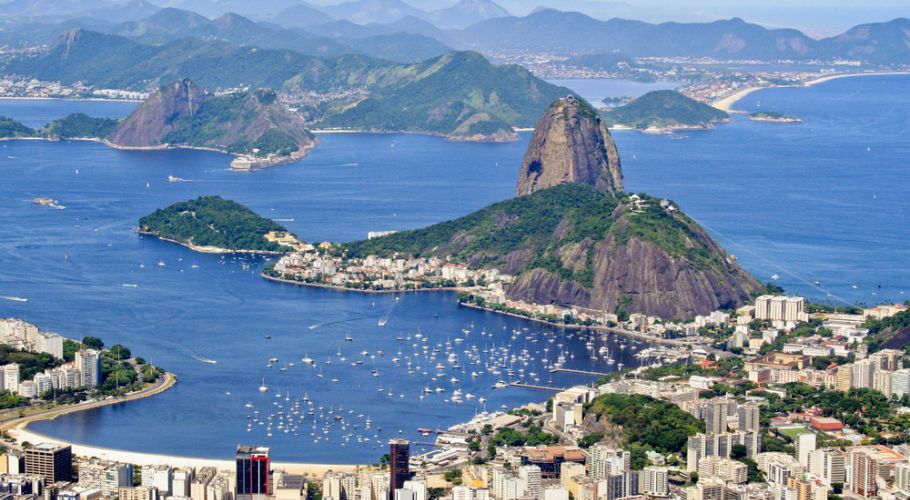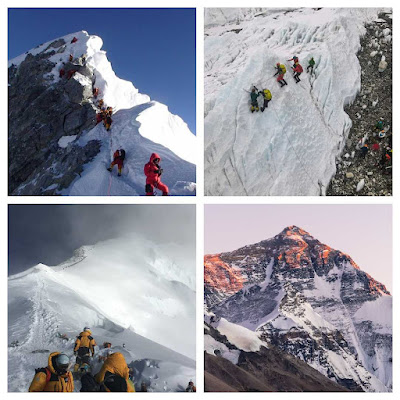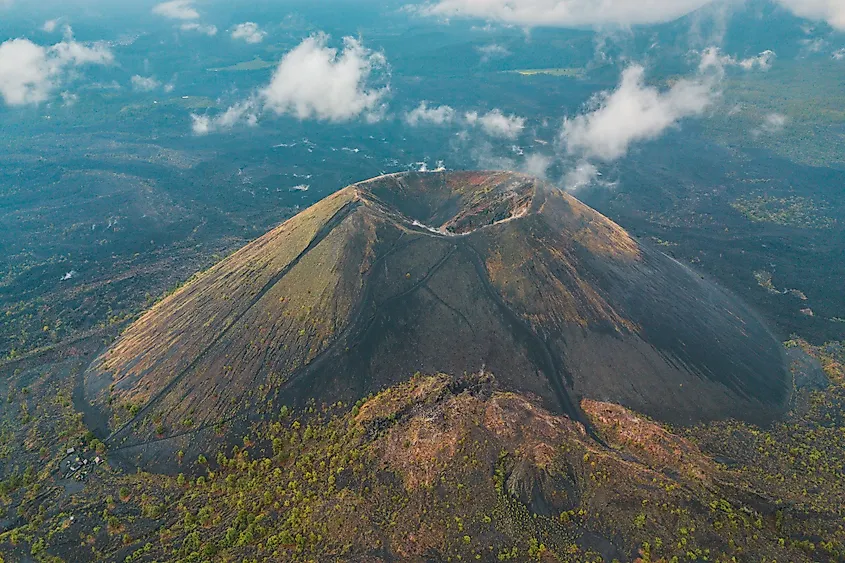Seven Wonders of Nature
The earth offers spectacular natural wonders that every human being wish to visit at least once in their lifetime.
We all know about the seven wonders of the world which are man-made, But below list are the seven natural wonders of the world compiled by Seven Natural Wonders (CNN) on November 11, 1997.
1. The Northern Lights: Aurora Borealis
- It's a natural phenomenon that consists of mystifying displays of light in the sky.
- The Northern Lights dance across the sky and spread a diffused glow along the northern horizon.
- These Northern Lights appear randomly in northern parts of Canada, Alaska, Iceland, Norway, Sweden and Finland.
- They occur throughout the year, but the probability of seeing the Northern Lights during winter.
2. The Grand Canyon
- It is a massive and colourful landscape located in Arizona and the USA providing a breathtaking view.
- It is a steep-sided Canyon that is 277 miles long and 18 miles wide carved by the Colorado River
3. The Great Barrier Reef
- It is quite simply an Australian top tourism treasure, stretching from the Northern tip of Queensland to the coastal town of Bundaberg.
- It is the largest and richest Coral Reef system in the ecosystem.
- It is the only living structure visible from the space.
- The most popular thing to do in Australia is Scuba diving and Snorkeling along the Reefs to view this magnificent natural wonder.
4. The Harbour of Rio de Janeiro
- The Harbour of Rio de Janerio is surrounded by granite mountains and pinnacles including sugar loaf mountains, Carcovada Peak and Tijuca Hills.
- The Harbour was Naturally created by erosion caused by the Atlantic Ocean.
- Marine ecosystem in and around the harbour was severely damaged, previously this place was a whaling ground, but presently Whales are no longer or rarely seen.
5. The Mount Everest
- It is the Earth's highest mountain above sea level, located in the Himalayas.
- China-Nepal border runs across the summit point.
- Its elevation is approximately 29,029ft.
- Mount Everest attracts many climbers including highly experienced mountaineers. There are 2 main climbing routes, one approaching the summit from the Southeast in Nepal and the other from the north in Tibet.
6. The Paricutin Volcano
- The Paricutin Volcano is a Cinder cone Volcano located in the Mexican state of Michoacan near the city of Uruapan.
- The Volcano last erupted in 1952, which completely evacuated and buried two towns by Lava and three other towns were heavily affected.
- The Volcano made 100's of people relocate permanently from the towns to a new place.
- Since after the eruption the larger region still remains highly active volcanically.
- The Paricutin is now dormant and has become a tourist attraction.
7. The Victoria Falls
- Victoria Falls is located in Africa along the borders of Zambia and Zimbabwe.
- The Spectacular waterfall runs off the Zambezi River.
- The best view of Victoria Falls is from Zambia.
- The best time to visit this Victoria Falls is immediately after the rainy season (Late November to Early April).
New 7 Wonders of Nature
It was an initiative started in 2007 to create a list of seven natural wonders chosen by people through a global poll.
It was an internet-based poll led by swiss-born Canadian Bernard Weber and organized by the New 7 wonder Foundation.
The worldwide polls closed on 11 November 2011, below is the list of places that are officially inaugurated as the World's New 7 Wonders of Nature.
1. The Table Mountain, South Africa
- Table Mountain is South Africa's most iconic landmark standing at a height of 1,085 meters above sea level.
- The stunning flat-topped mountain is home to the widest variety of flowers and other plant life in the world and, in fact, contains more species of plants.
- There are about 2,200 species of plants found on Table Mountain and 1470 floral species.
- It is much more than a scenic photograph background or a place from where you can take breathtaking photos of cape town.
2. Halong Bay, Vietnam
- Halong Bay is a UNESCO World Heritage Site and popular travel destination in Vietnam.
- The main attraction of this bay is thousands of limestone and islands in various shapes and sizes.
- The limestone in this bay has gone through 500 million years of formation in different conditions and environments.
- Halong bay is the home of many different flowers, plants, animals and fish.
3. Amazon River & Rainforest
- Amazon river is the largest river and area of tropical rainforest in the world, supporting a vast array of different species of wildlife and plant life.
- The forest and river are so large that their maintenance is vital to the entire ecosystem of the surrounding countries.
- The forest contains more than 40,000 plant species, 427 species of mammals, 1,300 different birds, 378 reptiles and roughly 3,000 freshwater fishes.
- It is the greatest river in South America and the largest drainage system in the world in terms of the volume of its flow and the area of its basin.
4. Jeju Island
- Jeju Island is South Korea's Volcanic island, covering an area of 1833.2 square kilometres.
- The central feature of Jeju is Hallasan (Shield Volcano), the tallest mountain in South Korea and a dormant Volcano.
- This Island was created entirely from volcanic eruptions approximately 2 million years ago.
- It has a humid subtropical climate, warmer than that of the rest of Korea with four distinct weather seasons. Winters are cool and dry while summers are hot, humid and sometimes rainy.
- It has magnificent waterfalls and pristine beaches with warm waters formed in the wake of underwater volcanic activity.
- Jeju has a unique ecological profile and is home to plant species not found anywhere else.
5. Komodo
- Komodo is one of the 17k islands that comprise the Republic of Indonesia and is particularly notable as the habitat of the Komodo dragon (the largest lizard on earth).
- The entire island is part of the Komodo National Park, which also includes Padar, Rinca and 26 smaller islands, where some of the richest arrays of marine life can be found.
- It's also a fantastic destination for scuba diving.
6. Iguacu Falls
- These amazing waterfalls straddle the border between Argentina and Brazil and can be approached via national parks in either of the countries.
- Iguacu Falls are located on the Iguacu River, which divides the river into upper and lower Iguacu.
- Iguacu Falls is roughly comprised of 275 distinct falls in the shape of a horseshoe.
- The most impressive part of all these falls is a U-shaped cliff which has 14 falls plunging more than 260 feet. This is popularly called The Devil's Throat.
- The Devil's Throat makes a thunderous noise that can hear a loud roar for miles away.
7. Puerto Princesa Subterranean River
- It is an underwater river in the Philippines that features a spectacular limestone rock that emerges directly into the sea and its lower portion is subject to tidal influences.
- Underground cave systems carved out by these rivers are home to unique plants and animals like a new species of giant spider found in Puerto Princesa.
- This underwater river is unique and it flows directly into the sea which leaves the end of the river subject to the influence of ocean tides.
- This place has a unique range of species and animals that are found nowhere else on the planet.













4 Comments
Beautiful places🤩🤩
ReplyDeleteMy personal best is underground river
Ahhh nature at it's best
ReplyDeleteThe Great barrier reef with corals 🤩
I love the images u selected to use in this blog
ReplyDeleteSuper places ammu
ReplyDeletePost a Comment
Thank You So much for ur Comments